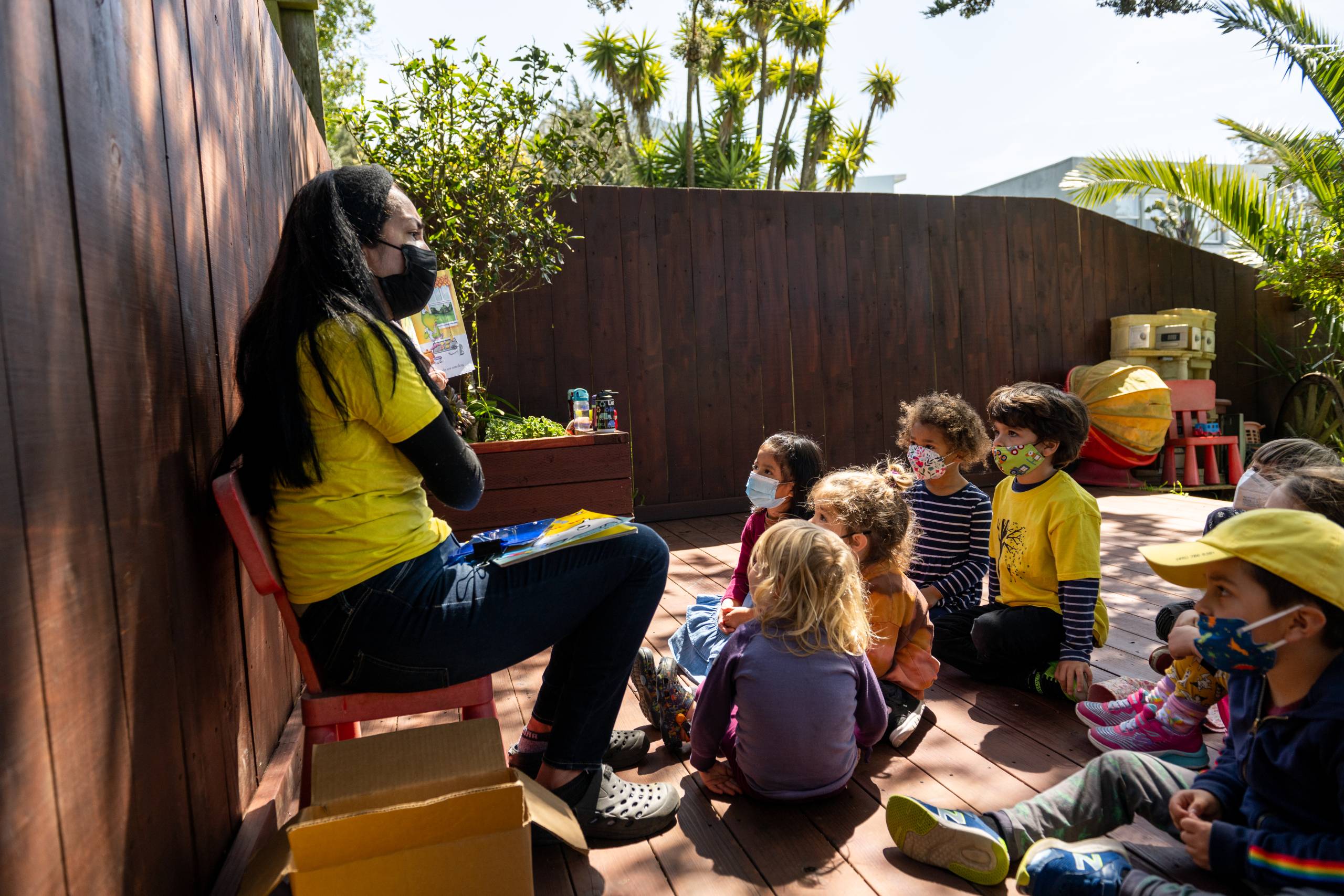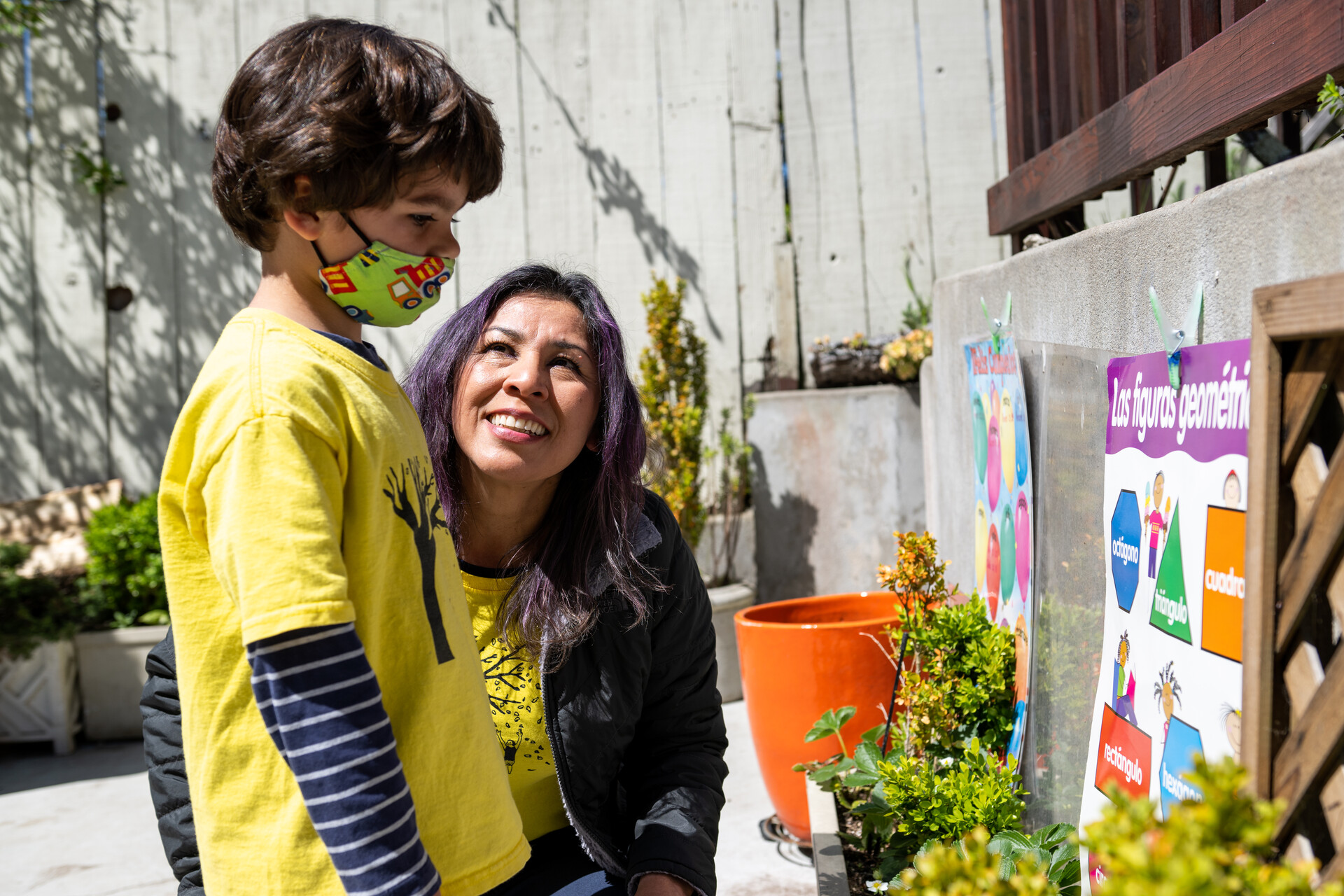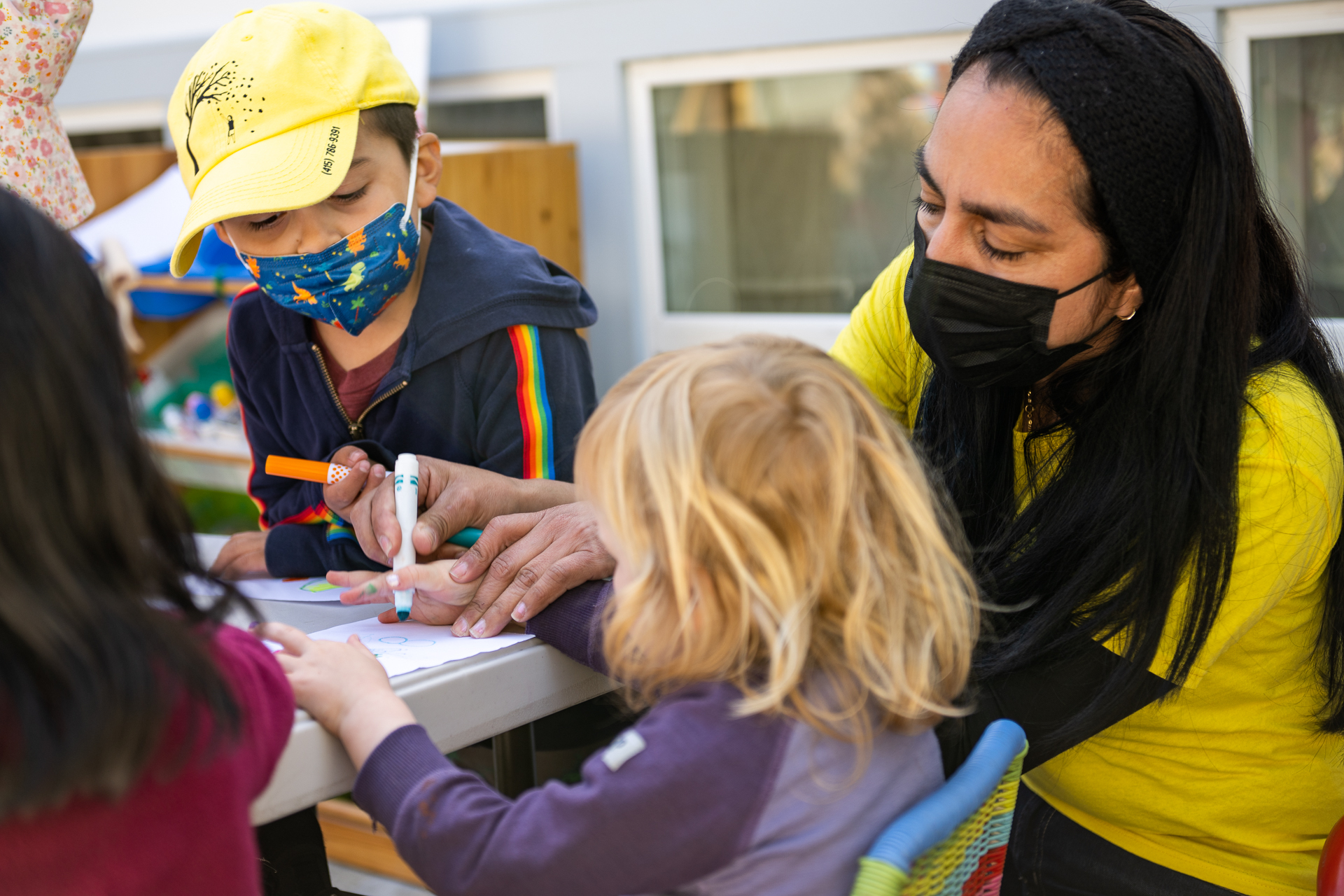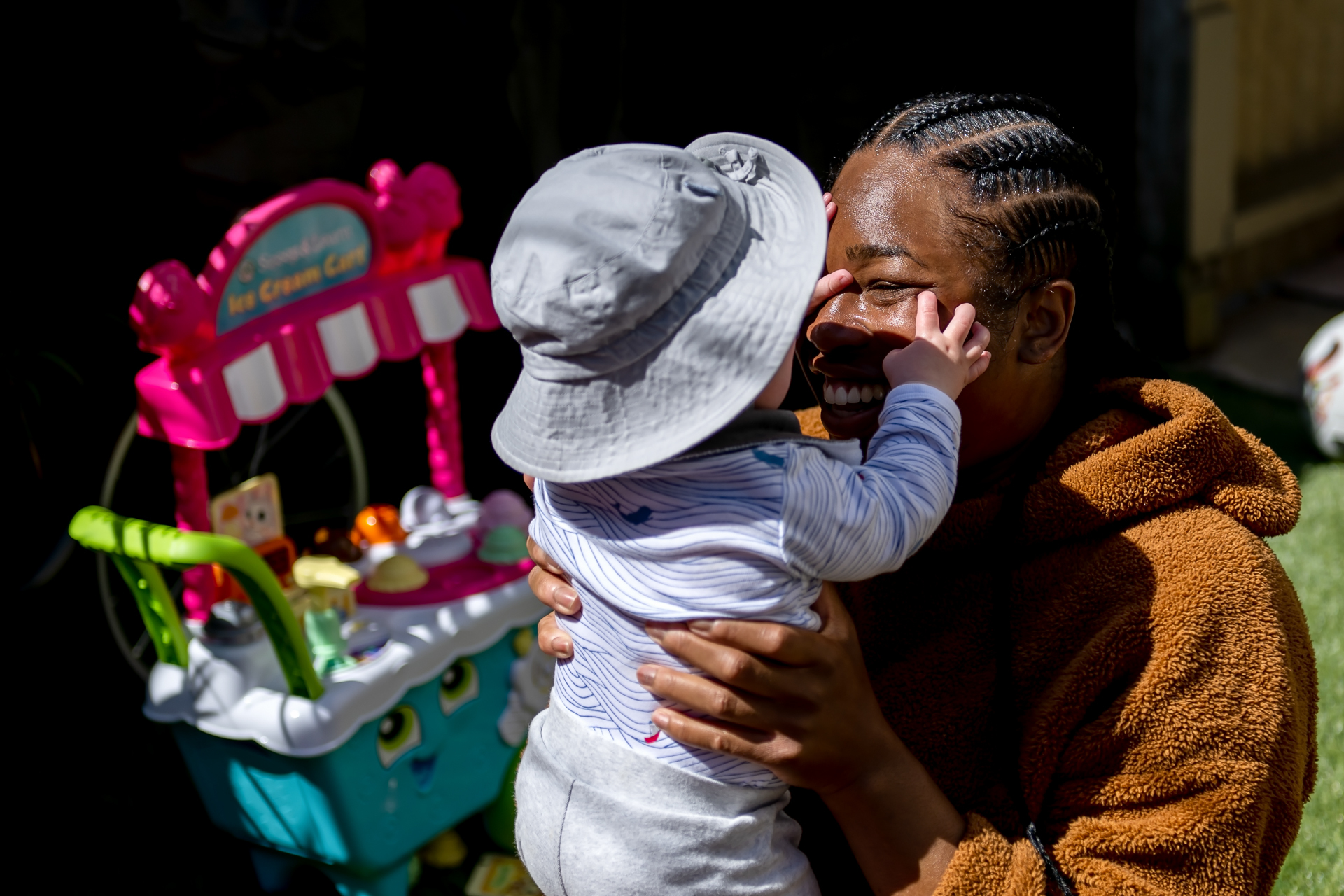When rain from an atmospheric river storm flooded the preschool inside Corey Santillan’s hillside home in San Francisco this past winter, she thought she’d have to cancel class for weeks.
Water seeping from underground wrecked the wood floors, books, art supplies, costumes for pretend play and other classroom materials. The damage was the latest existential threat to La Bamba Preschool — a business Santillan started 16 years ago when she couldn’t find a Spanish-immersion program for her daughter in their Oceanview neighborhood. It survived a recession, a pandemic in which two of her longtime teachers quit and years of financial struggle.
“There have been times when I thought it was time to say goodbye to this beautiful program,” Santillan said.
But thanks to Baby Prop. C, a business tax to support San Francisco’s goal of providing early education and care for all of the city’s children, Santillan is starting to see some change.
She received a $15,000 grant to install a water pump and repair some of the damage.

She also received stipends to boost her income — enough to allow her to hire a part-time assistant — and was able to access funding to build a structure in her back yard that will be used as a therapeutic room for kids who experience sensory overload. Since the pandemic, she’s seeing more kids with developmental delays due to social isolation.
“I feel I can afford to hire an extra staff so we can do that one-on-one work with the children that need it,” Santillan said.
In 2018, San Francisco voters narrowly approved a commercial rent tax to expand access to child care, particularly for lower- and middle-income families, and to help pay early educators a living wage. At the time, proponents argued for a dedicated funding stream for child care to help with waitlists for subsidized care for children under the age of 4 (PDF) and to cover pay raises for early educators, a third of whom were relying on public assistance programs to make ends meet.
To keep them in the workforce, the city intends to pay early educators at least $28 per hour by 2025. This far exceeds the $13.43 median wage for child care workers in California, according to the latest data from the Center for the Study of Child Care Employment at UC Berkeley.

Taxpayer and business groups challenged the measure and held it up in the courts but funds collected under it began reaching families and providers last year. Around the same time, Mayor London Breed launched the Department of Early Childhood, dedicating $300 million annually to support the city’s goal of providing universal early care and education to all young children. The bulk of the revenue comes from the commercial tax, although that number will likely dip due to rising vacancy rates at downtown offices and retail spaces.
Those funds have increased wages for teachers and expanded access to child care, putting San Francisco further along than the rest of the state in reforming the child care system.
Now, families making up to 110% of the San Francisco area’s median income — or up to $152,400 a year for a family of four — can qualify for subsidized child care for their kids under age 4.
“This is not some luxury that you can do without,” said Wei-min Wang, deputy director for the Department of Early Childhood.
“I think at this point, almost every family, every parent, every caregiver knows that early education is essential to getting kids a leg up in terms of getting ready for school — and, by virtue of that, ready for life,” he said.

Since the rollout of Baby Prop. C, the waitlist for families eligible for subsidized care has gotten shorter — from the 2,000–3,000 range down to about 1,000, according to Wang — but there are lingering concerns about meeting the needs of families with babies and toddlers.
“The ability to provide subsidies for low-income families with infant and toddlers will take some time. The infrastructure needed will take time,” former Supervisor Norman Yee, who spearheaded the campaign for Baby Prop. C, told KQED in an email.
“The most concern I have is the growing of the workforce,” he added.
That’s because caring for infants and toddlers is a labor-intensive job that costs more than other types of child care.
“It is the most expensive because ideally you’re in a situation where you have no more than three infants to each adult. Anything higher than that, I mean, you can just imagine … like having to care for four babies at one time,” Wang said.


